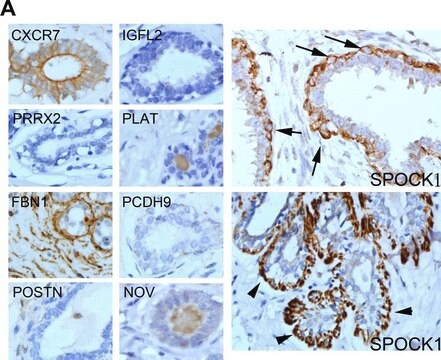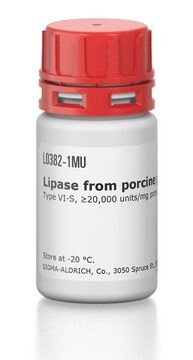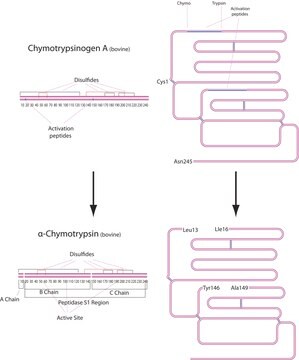S5049
Monoclonal Anti-S100A6 antibody produced in mouse
clone CACY-100, ascites fluid
Sinónimos:
Anti-Calcyclin
About This Item
Productos recomendados
origen biológico
mouse
Nivel de calidad
conjugado
unconjugated
forma del anticuerpo
ascites fluid
tipo de anticuerpo
primary antibodies
clon
CACY-100, monoclonal
contiene
15 mM sodium azide
reactividad de especies
rat, bovine, human, pig, goat, lizard, canine
técnicas
immunohistochemistry (formalin-fixed, paraffin-embedded sections): suitable
immunohistochemistry (frozen sections): suitable
immunoprecipitation (IP): suitable using native preparations
indirect immunofluorescence: 1:4,000 using bovine tongue frozen sections
western blot: suitable using denatured-reduced preparations
isotipo
IgG1
Nº de acceso UniProt
Condiciones de envío
dry ice
temp. de almacenamiento
−20°C
modificación del objetivo postraduccional
unmodified
Información sobre el gen
human ... S100A6(6277)
rat ... S100a6(85247)
Categorías relacionadas
Descripción general
Especificidad
Inmunógeno
Aplicación
Immunohistochemistry (1 paper)
Acciones bioquímicas o fisiológicas
Cláusula de descargo de responsabilidad
¿No encuentra el producto adecuado?
Pruebe nuestro Herramienta de selección de productos.
Código de clase de almacenamiento
12 - Non Combustible Liquids
Clase de riesgo para el agua (WGK)
nwg
Punto de inflamabilidad (°F)
Not applicable
Punto de inflamabilidad (°C)
Not applicable
Elija entre una de las versiones más recientes:
¿Ya tiene este producto?
Encuentre la documentación para los productos que ha comprado recientemente en la Biblioteca de documentos.
Nuestro equipo de científicos tiene experiencia en todas las áreas de investigación: Ciencias de la vida, Ciencia de los materiales, Síntesis química, Cromatografía, Analítica y muchas otras.
Póngase en contacto con el Servicio técnico






